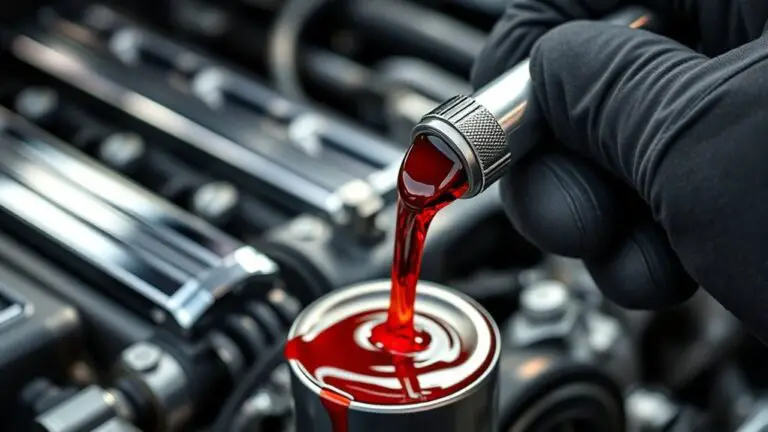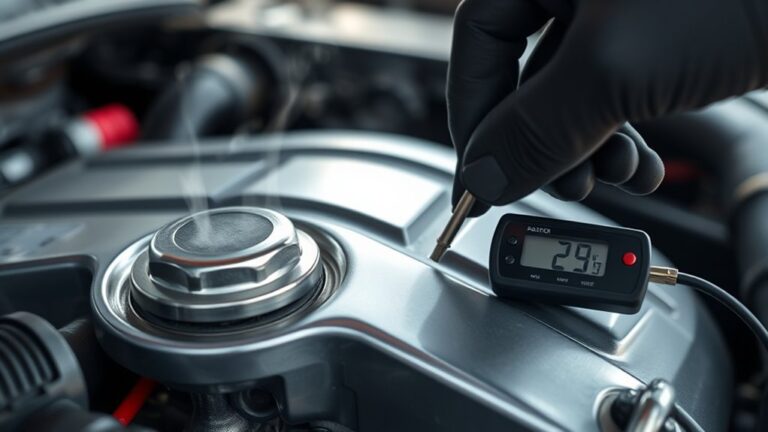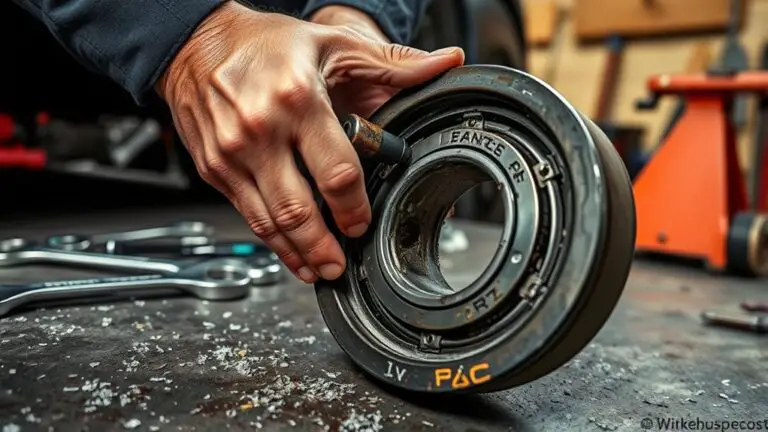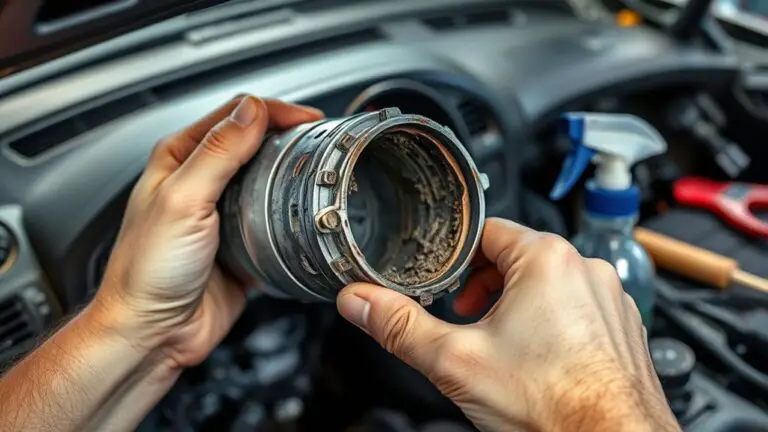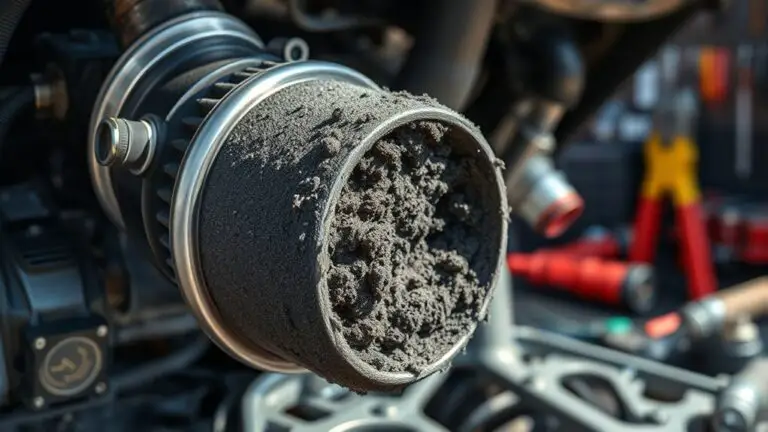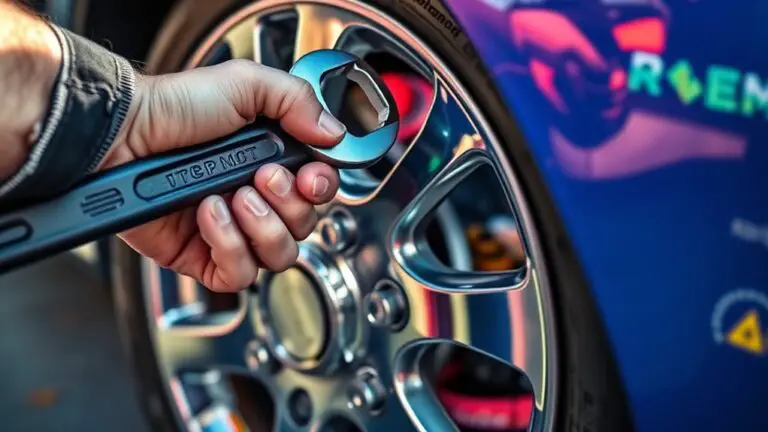Symptoms That Point to a Failing Intank Pump Module
If you’re seeing symptoms of a failing intank pump module, start with the basics: monitor fuel pressure and volume under load, and note any drops or long cranks. Look for erratic engine performance, stalling, or sputtering during acceleration or highway speeds. Listen for unusual pump noise and check for fluctuating fuel gauge signals. Inspect the sender wiring and connectors, and verify voltage stability. If issues persist, plan targeted maintenance or replacement; you’ll uncover more specifics as you proceed.
Erratic or Stalling Engine Performance
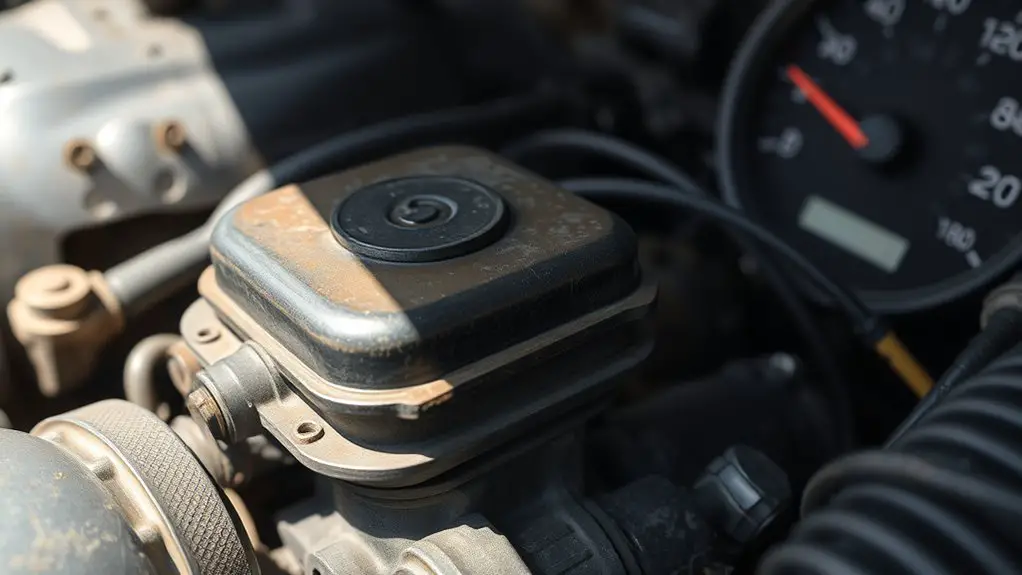
If the intank pump module is failing, you may notice the engine surging, misfiring, or stalling under varying load, RPM, or fuel demand. You’ll approach this with a clear, data‑driven mindset, isolating variables to verify symptoms belong to the fuel system. Begin with consistent diagnostic steps: confirm fuel pressure and volume at key RPMs, check for dropping pressure under load, and note any long crank delays. Erratic idle, hesitation, or intermittent stalls often point to irregular fuel supply rather than ignition faults. Corroborate with engine diagnostics to rule out sensor or wiring issues, and examine the pump relay, ground path, and connectors for looseness. If pressure bleeds down quickly after shutdown, suspect the intank module or filter; if pressure holds but performance falters under acceleration, inspect the pump’s ability to sustain flow. Document findings, compare to specifications, and decide on repair or replacement based on measurable fuel system performance.
Sputtering During Acceleration or at Highway Speeds
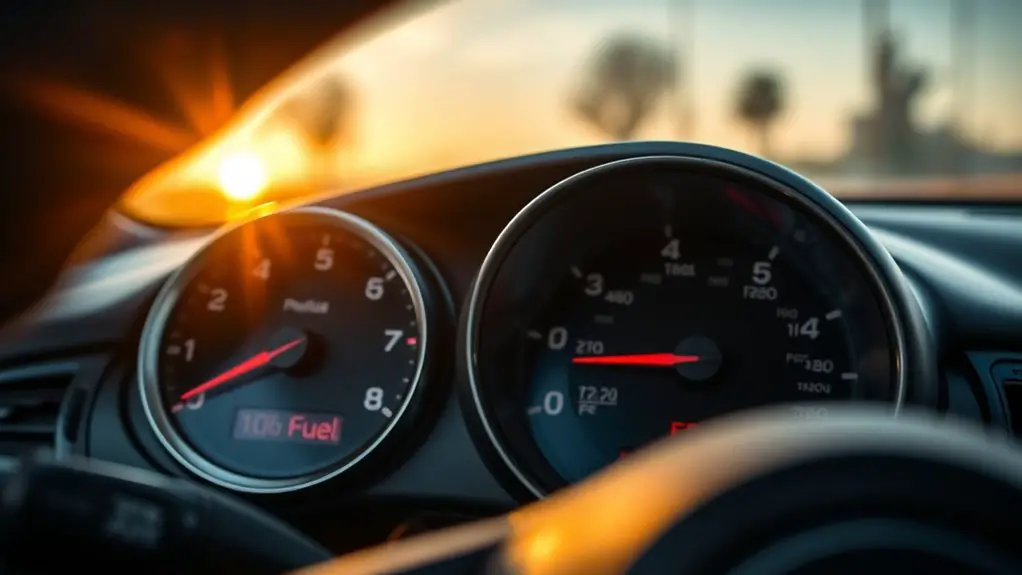
Sputtering during acceleration or at highway speeds often points to a fuel delivery shortfall from the intank pump module, especially when the symptom appears under load rather than at idle. You’ll want to verify fuel pressure at the rail with a proper gauge, noting whether pressure drops as you demand more torque. If the pressure is inconsistent or wobbles under acceleration, sputtering causes may include a failing pump, a collapsing return line, or a clogged filter that starves the rail during load. Check the sender circuit for voltage fluctuations and resistance changes that could mimic fuel starvation. Listen for momentary lean misfires, and correlate them with RPM and pedal position. If you locate a pattern tied to acceleration, pursue testing of the pump’s current draw and impedance, plus connector integrity. Use diagnostic data to separate electrical faults from mechanical wear, and document findings to guide targeted repairs rather than guesswork, maintaining a clear path toward reliable power delivery and freedom on the road.
Poor Fuel Economy and Decreased Range
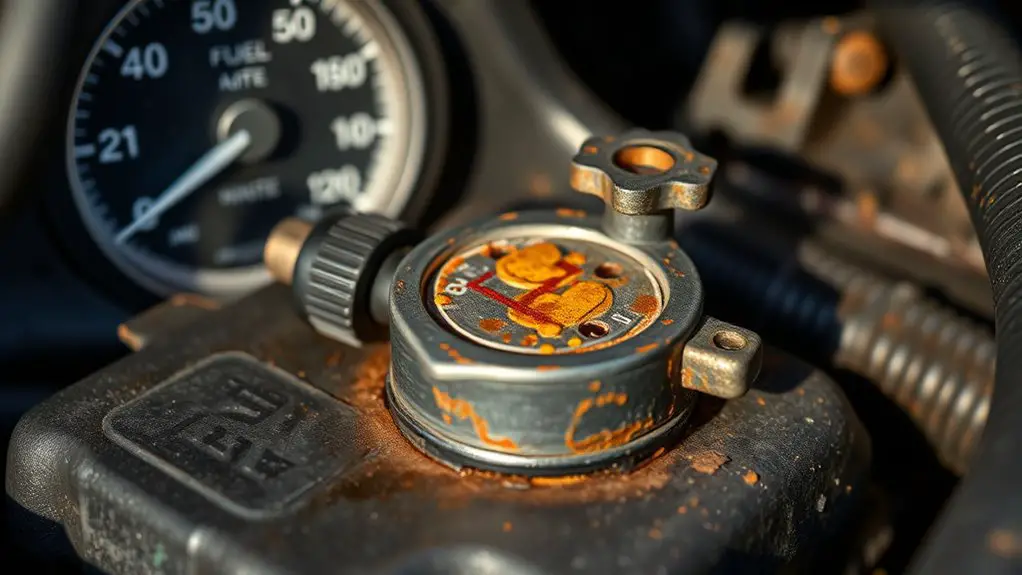
Poor fuel economy and decreased range often point to a mismatch between fuel delivery and demand, particularly when the intank pump module struggles to keep up under load or as the vehicle’s duty cycle increases. You’ll diagnose by measuring fuel pressure, observing fuel trim, and evaluating demand versus supply. If pressure sags under acceleration or climbs slowly with load, the pump module is a likely limiter.
1) Confirm baseline fuel pressure and monitor for drops during duty cycle changes.
2) Check electrical supply and grounds to the pump, ensuring consistent voltage.
3) Inspect the pickup screen for restriction and verify proper fuel-level effects on buoyancy.
4) Compare observed fuel economy against manufacturer specifications, adjusting driving habits to isolate contributing factors.
Use fuel efficiency tips and deliberate driving habits to optimize range while you plan repairs. Balance efficiency goals with safe operation, then pursue targeted fixes to restore consistent fuel delivery.
Hard Starting or Long Crank Times
You may notice a slow crank on startup, which can point to reduced fuel pressure or a weak pump signal. Look for fuel pressure clues, electrical fault signs, and any related slow-crank symptoms to narrow the cause. Systematic checks in these areas help identify whether the issue lies with fuel delivery, electrical wiring, or the pump module itself.
Slow Crank Symptoms
Slow cranks are a telltale sign that the intake pump module isn’t delivering steady fuel pressure. You’ll notice longer, deliberate cranks before the engine catches, even on a warm start. Pinpointing the issue requires a calm, methodical check of fuel delivery and electrical stability.
- slow crank causes — inspect the module’s ability to maintain pressure under load.
- slow crank solutions — verify fuel pump voltage and ground continuity first.
- slow crank causes — test the filter and connectors for restrictions or corrosion.
- slow crank solutions — confirm the accumulator and return lines aren’t collapsing under pressure.
Proceed with controlled steps, document readings, and reassess after each test. This approach keeps you focused on fundamental factors, guiding you toward reliable starts.
Fuel Pressure Clues
Fuel pressure tells the tale when starting is hard or cranks linger. You’ll verify it with methodical steps: connect a gauge, observe key ranges, and compare to your vehicle’s spec. If pressure climbs slowly or drops under load, suspect the pump or its pickup feed. Fuel pressure testing should be performed with the ignition on, engine cranking, and steady-state idling to map the curve. Note how long it holds after key-off; rapid decay can indicate a sealing issue or degraded pump. Document any irregular flutter or wavering readings, then cross-check fuel trim data for corroboration. If readings look off, prioritize pump maintenance actions: inspect lines, clean or replace the sock, and confirm proper regulator function. Accurate data drives safe repairs.
Electrical Fault Signs
Electrical Fault Signs: Hard starting or long crank times often point to energy delivery or sensor feedback issues rather than fuel pressure alone. You’ll diagnose systematically, tracing circuits and signals, not guesses.
1) Inspect wiring issues: check for damaged insulation, bare strands, and routed harnesses that chafe or short.
2) Test connectors: unplug/plug with clean contacts, look for bent pins, and verify secure locks.
3) Measure voltage at the pump: compare against spec during cranking to confirm power supply integrity.
4) Evaluate sensor feedback: monitor ECU sensor inputs for anomalies that could delay fuel modulation or spark timing.
Notes: look for connector corrosion as a root cause, clean or replace as needed. This approach preserves freedom to troubleshoot without blindly replacing parts. Prioritize precise, verifiable evidence.
In-tank Pump Noise or Whining
When an in-tank pump starts to whine or emit unusual noises, it can indicate internal wear or failing bearings, a clogged impeller, or debris interfering with rotation. You’ll assess sound, frequency, and duration to distinguish a temporary resonance from progressive wear. Lift the scenario into a diagnostic mindset, tracing potential causes to core components and operating conditions.
| Symptom | Diagnostic note |
|---|---|
| High-pitched whine | Possible bearing wear or cavitation; check mounting alignment and fuel height |
| Throaty rumble or grinding | Impeller obstruction or debris; inspect inlet screen and filter, clean as needed |
Focus on in-tank maintenance checks, listen for changes under load, and verify electrical supply stability. If noise persists after cleaning and inspection, plan for pump replacement. Your goal is reliable fuel delivery and reduced noise, not DIY guesswork. Maintain clear records, monitor performance, and proceed with controlled component replacement if symptoms recur.
Intermittent Fuel Pressure Drops or Fuel Gauge Fluctuations
You may notice inconsistent pressure readings and a fluctuating fuel gauge signal as you monitor the system. Start by verifying fuel pressure stability across the full operating range and cross-checking gauge accuracy with a known-good reference. If readings drift or bounce, map the pattern to determine whether the issue points to the pump module, wiring, or sender unit.
Inconsistent Pressure Readings
Inconsistent pressure readings, including intermittent fuel pressure drops or fluctuating fuel gauges, point to a delivery system that’s failing to maintain a steady signal under operating conditions.
1) Confirm symptom location by observing both the gauge and pressure gauge under load, noting any drops that recover without cycling the ignition.
2) Log patterns: time of day, engine temperature, RPM, and road conditions to distinguish random faults from systemic issues.
3) Isolate causes by ruling out external fuel supply problems, then test the in-tank pump assembly for voltage stability and flow rate consistency.
4) Plan corrective action with in tank maintenance and pump replacement as needed, prioritizing a reliable signal path and repeatable performance.
Fluctuating Fuel Gauge Signals
Fluctuating fuel gauge signals often accompany intermittent fuel pressure drops, signaling an unstable signal path between the pump and the gauge. You’ll want to verify the gauge reading against actual pressure data and inspect the wiring for loose connections, corrosion, or impedance changes. Systematically rule out common causes before suspecting the tank module itself. Check fuel gauge calibration and compare it to measured fuel volume to detect discrepancies that point to calibration drift or sensor malfunction. Because signals can be noisy, monitor the sensor output with a qualified scan tool to discern transient spikes from steady faults. If readings persistently diverge from reality, pursue targeted diagnostics on the sender unit, connector pins, and harness, then confirm with repeatable tests. Maintain a concise diagnostic log for reliability and safety.
Frequently Asked Questions
How Does an In-Tank Pump Module Affect Cold-Start Reliability?
An in-tank pump module directly influences cold-start reliability by delivering steady fuel pressure and volume during cranking. If delivery dips, you’ll notice hard starts, longer cranks, or rough idle. You should evaluate cold start performance under varying temps, and listen for fuel-starved symptoms. If fuel delivery is inconsistent, addressing pump or filter issues restores reliable starts. You’ll regain confidence, smoother starts, and consistent engine performance when the system maintains steady pressure during cold starts.
Can Fuel Quality Cause Pump Module Issues Despite Proper Wiring?
Yes, fuel quality can cause pump module issues even with proper wiring. If you notice erratic pressure, sputtering, or hard starts, investigate fuel contamination and its effects on filtration and pump cooling. Methodically check fuel for varnish, water, or particulates, then verify the pump maintenance history and filter condition. Trace narrows: contaminated fuel can foul the module, while clean, consistent fuel supports reliable operation and easier diagnostics.
Do Aftermarket Filters Influence Pump Module Lifespan?
Yes, aftermarket filters can influence pump module lifespan. When you choose aftermarket benefits that fit your system and guarantee filter compatibility, you reduce clogging, strain, and intermittent fuel supply. Misfit filters, poor materials, or incompatible flow rates threaten the module’s bearings and seals. You’ll gain freedom by selecting proven, compatible options and preserving proper filtration. Diagnose flow, verify compatibility, and monitor pressure. With precise choices, you extend life and performance without sacrificing autonomy.
Is There a Diagnostic Sequence to Isolate Pump vs. Regulator Failure?
Yes, there is a diagnostic sequence to isolate pump vs. regulator failure. Start with diagnostic tools to verify fuel pressure under load, then perform a controlled pressure test. If pressure holds steady with key-on, suspect regulator; if it drops, focus on the pump. Use stepwise checks: command flow, measure current, listen for pump noise, and compare to spec. Document findings, interpret results, and proceed with targeted repairs.
What Safety Precautions Exist When Inspecting an In-Tank Pump Module?
You should use safety gear to inspect an in-tank pump module, and you must be aware of electrical hazards. Wear insulated gloves, eye protection, and a face shield, then disconnect power and verify the fuel system is depressurized. Keep a log of steps, avoid metal tools near live terminals, and use a non-contact voltage tester. Work slowly, document findings, and maintain good ventilation to reduce risk during inspection.


